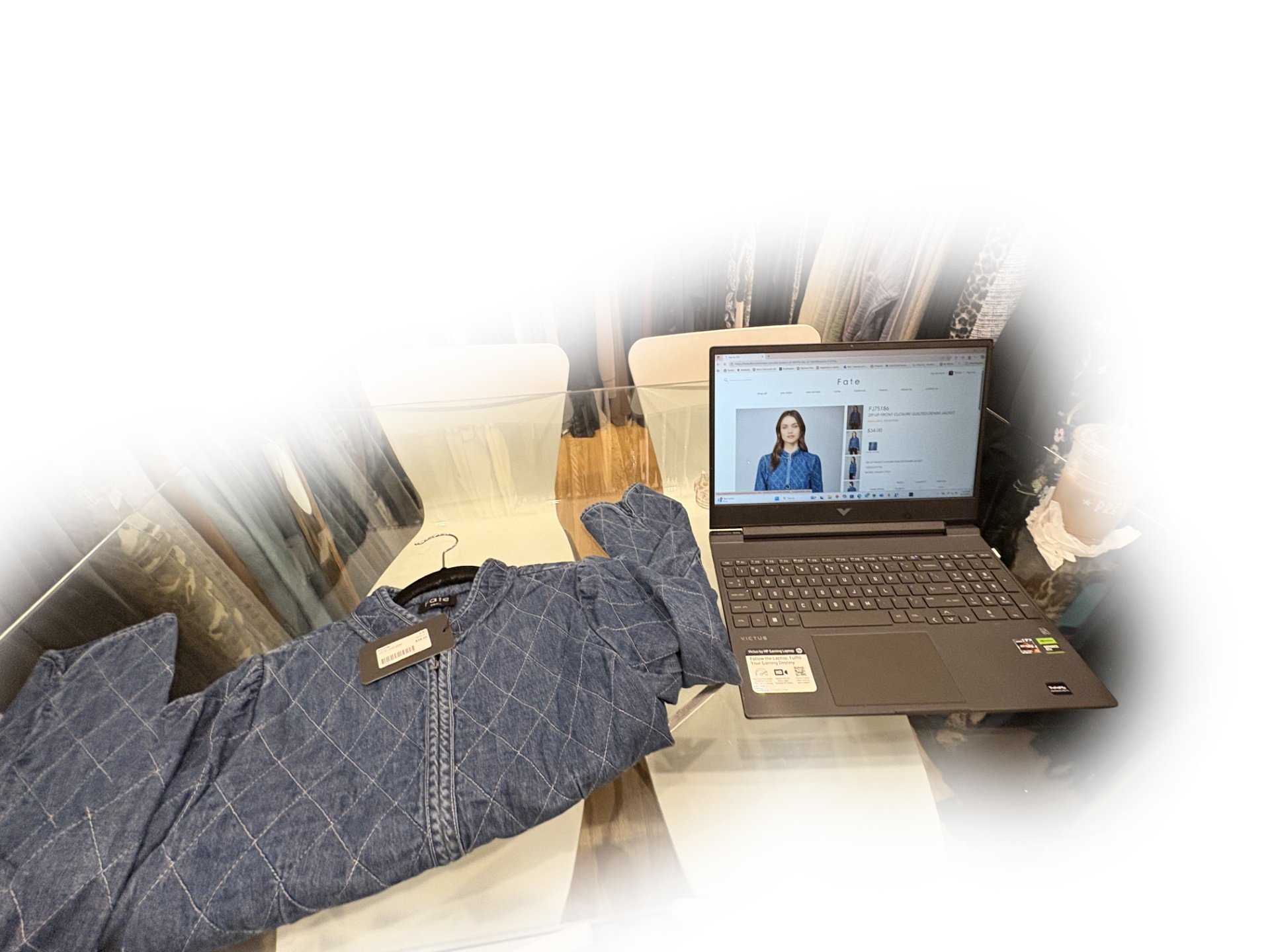a look into a showroom
by arianna lecruise
Have you ever wondered how a designer’s garment goes from a sketch to the racks of your favorite stores? The answer is the showroom. A showroom is a place designers use to display their collections to buyers, stylists, and media representatives. The showroom is normally owned by merchandisers who meet with clients and know the ins and outs of the collections. There is a lot of behind-the-scenes precision that goes into these showrooms!
While interning at the B. Ivy Showroom in New York City, I quickly realized how important effort and details are in every task. Showrooms put meticulous thought into how they merchandise the clothing, from color story, all the way down to the hangers being equally spaced. Buyers are more likely to buy the garments if the showroom is organized, and they can imagine the items in their own store. The merchandisers work hard to create line sheets to send to buyers, which allows buyers to view the clothing from afar and purchase it. The line sheets include photos of the garment, style numbers, prices, and the available colors. There is a lot of paperwork that goes into the showroom. Then, merchandisers make appointments to show off the samples so buyers can feel the fabric and see the fit.
Daily tasks in a showroom are not what you might expect. You learn to file order forms, tag the clothing, as well as edit the tags, you steam and hang all the new samples after opening new boxes, etc. Samples are also packed up for the different seasons in the showroom. Of course, there are also the usual intern tasks, where you bring a check to the bank and grab coffee for your boss. There are also trade shows to attend, where companies go to show their samples to buyers/ companies. Trade shows are fun to be a part of; the atmosphere is almost like a Comic-Con but for fashion. There are set-up days where you steam the clothing and set up the booth to show off the look of the brand. It all comes together in the end. It’s amazing to walk around and look at all the unique designs and vibes of the companies. Showrooms are an extremely vital part of the industry. They are also pretty hands-on. Some days you might sit at your desk and do line sheets, and other days you’re updating the tags to the correct shipping dates.
The most important part of working in a showroom is appointments to meet with clients. It’s vital to advertise brands to clients properly. Clients come in and will be able to try clothing, ask you about all the little details, and feel the fabrics. It is important to study and retain knowledge about brands. Showrooms are also commission-based, so it’s kind of like a car dealership; if a person doesn’t buy the car, you don’t earn anything for it.
I’ve spent hours steaming new samples straight from the box that seemed endless, but seeing the polished racks of clothing at the end paid off. Even something as little as spacing the hangers just right made me realize how important these little details are in making a difference. As well as helping my boss merchandise the clothing with perfect color stories on the rack, there is so much detail that seems so small and tedious but makes such a difference. Organization is a key part of this showroom. I take a lot of time updating shipping dates online sheets, which made me realize how much confusion one little thing like that could cause. The relationship with clients is also such a huge part of making a sale; a strong pitch, and knowledge is crucial.
Working at a showroom has shown me that fashion isn’t just glamorous; there’s organization, precision, and teamwork that goes into it. I’ve learned to appreciate the work that goes into keeping fashion moving. Without showrooms, the gap between designers and stores would be almost impossible to bridge.
“While interning at the B. Ivy Showroom in New York City, I quickly realized how important effort and details are in every task.”



